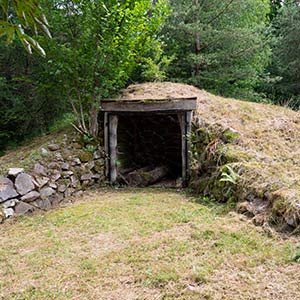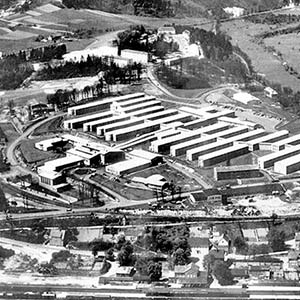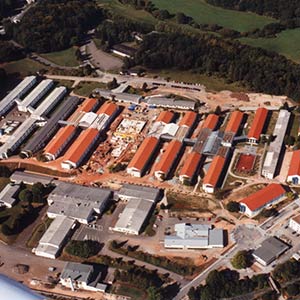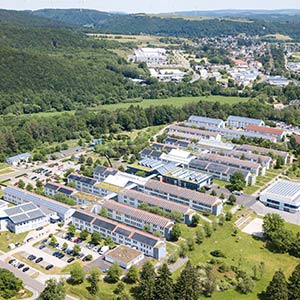History of the Environmental Campus Birkenfeld (ECB)
On the territory of today‘s campus area was a Celtic burial ground with at least twelve burial mounds in the Early Latène period. Magnificent grave goods were found during excavations beginning in 1844 and are conserved for instance in the Birkenfeld Museum.
In 1953, construction began for the largest U.S. Army hospital outside America, and the 1,000-bed „98th General Hospital“ opened in 1954. In September 1971, troops were withdrawn and the hospital closed. In 1994, it was completely disbanded. On October 1st 1996, the Environmental Campus opened its doors to about 600 students. For this purpose, the old building structure was primarily utilised – much of it was still under construction at the time.
Since then, a building concept unique in Europe with CO2-neutral energy and heat supply as well as state-of-the-art buildings and technical equipment was continuously implemented. So much so that, in 2024, the ECB established itself for the 8th year as German‘s most sustainable campus and is ranked 6th in the world (GreenMetric Ranking). In 2021, the campus also received the award as a Fairtrade University.
The spirit of environment and sustainability also forms the thematic link within the study programmes. Interdisciplinary cooperation as well as the interlinking of ecological, economic, technical and social concerns enables students to analyse and optimise complex systems in their future jobs.

Keltische Grabanlagen (Nachbau)

US-Militärhospital

Gründung des Umwelt-Campus Birkenfeld

„Zero Emission University“ mit CO2-neutraler Energie- und Wärmeversorgung und modernster Gebäude-
und Anlagentechnik